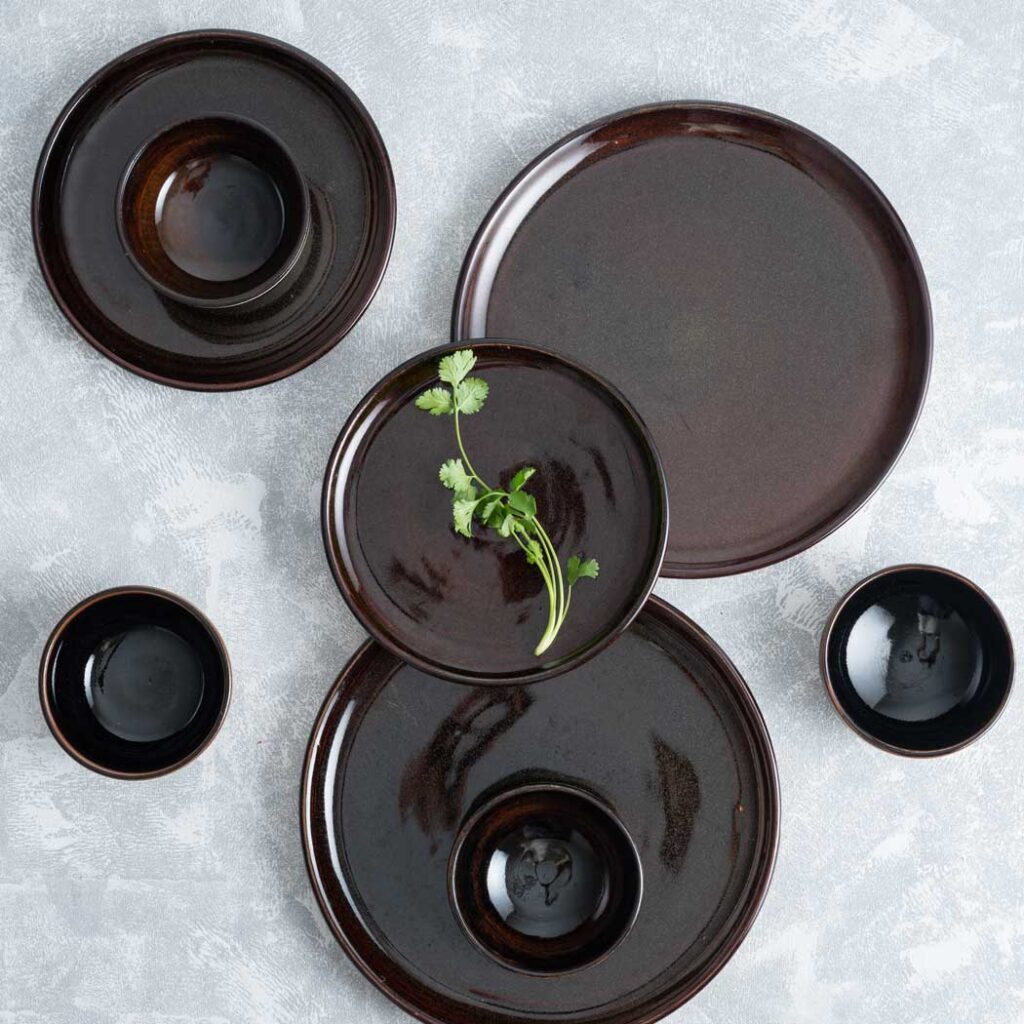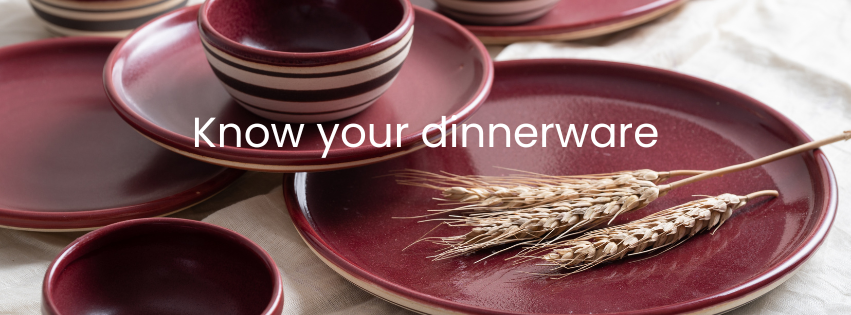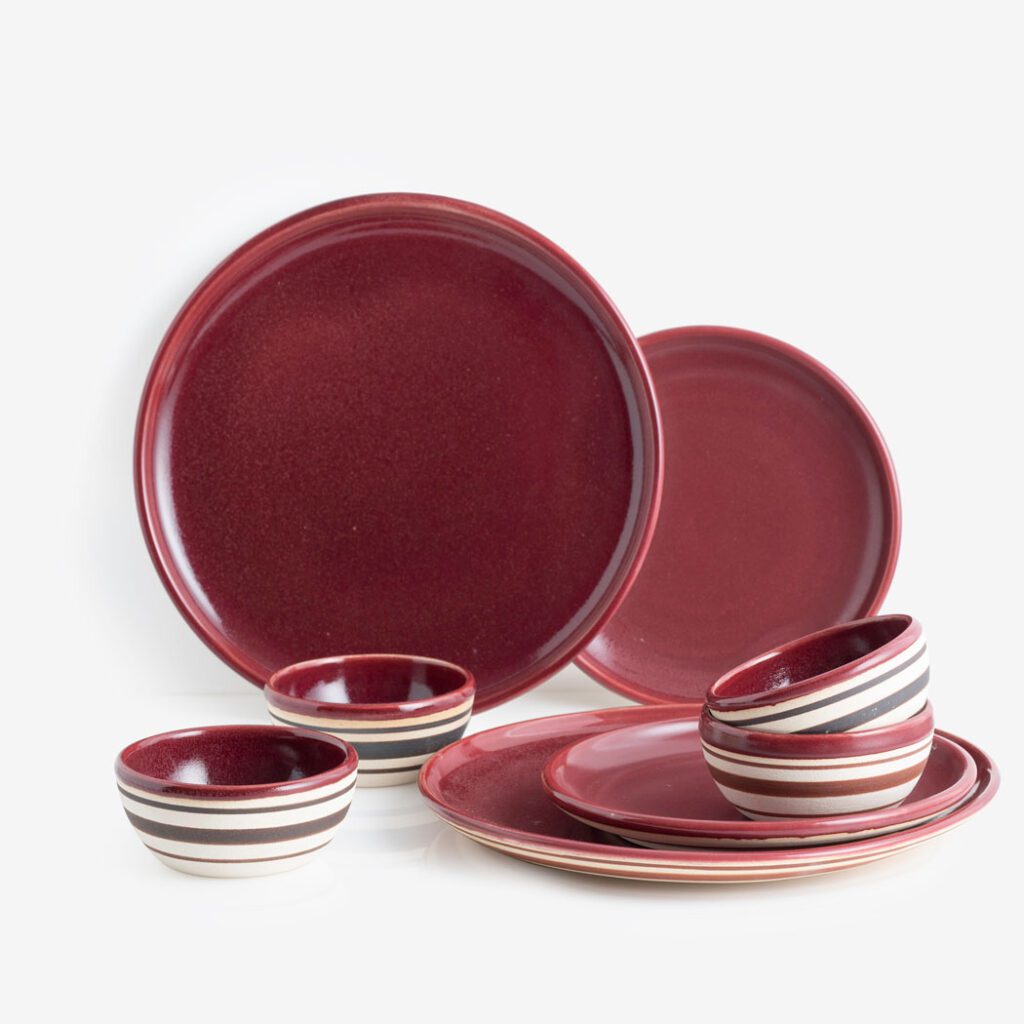We humans have come up with some pretty impressive inventions over the tens of thousands of years. And The Neolithic Revolution had brought about the invention of pottery revolutionizing preparation & preservation of food. The Modern-day ceramic dinnerware is the direct successor of the early clay pots.
The evolution from the early clay pots to today’s ceramic dinnerware is the evidence of artistry, symbolism & storytelling associated with the human need to express ourselves through artistic designs & patterns. Ceramic dinnerware is appreciated for its functionality and beauty, widely used in countries like Canada, USA, UK, Dubai & India.

You know what gives depth, character and individuality to an art? Imperfections! And so does when it comes to handmade ceramics. Unlike the factory-made uniformity, with the perfect dimensions, handmade creations let you connect with the creativity of the artisan, the story behind the creation. This artistic possibility is reflected in the diverse types of ceramic dinnerware, which are as follows:
Earthenware:
Locally known as “mitti ke bartan”, earthenware has been used in India for centuries. It’s an integral part of the Indian heritage closely associated with traditional cooking & serving methods. Dating back to 9000 years, earthenware is the first kind of pottery made.
Often referred to as terracotta, one of the unique qualities of earthenware is that it’s porous in nature, it means the structure has tiny holes through which air & water may pass. And the reason it is porous? Because it’s made from natural clay and is fired at relatively low temperatures (1000C – 1150C) which gives it a slightly coarse texture. This is the reason people from different parts of the world like India, Middle East and North Africa, Mexico, parts of Southern Europe, such as Spain and Portugal etc. make use of terracotta pots to store and cool water.
Earthenware is eco-friendly, biodegradable, and free from harmful chemicals, and is also believed to provide added minerals, along with enhancing the taste of the food, which contributes to the overall health.
Porcelain:
Also known as “china”, porcelain originated in China during the Tang Dynasty(618-907 AD), and is known for its durability, strength & translucent beauty. Also, it is quite expensive, the reason being:
- Kaolin – A special clay, which is rare and is not found everywhere. And which gives porcelain its white colour.
- Complex and labour-intensive production process.
- The precise control required during the manufacturing process.
- Porcelain is fired at a temperature of about 2650 Fahrenheit, which is much higher than most ceramics.
Bone China:
Bone china is the subset of porcelain, with the added additive of calcified bone ash (typically derived from cattle, specifically cow bones). And that is the obvious reason it’s called Bone China. Most of the bone china crockery users across the world are unaware of this fact, and continue with the use because of its high quality, durability & translucency. The percentage of bone ash can vary, ranging from 30% to 50% in traditional formulations.
After knowing the fact that primarily ash created from cow bones is utilized for creating the bone china crockery, whether it affects you or not, is entirely subjective. But having an awareness is essential that animals have been slaughtered to create the plates & utensils you use to serve & enjoy your food.
In India, where cows hold significant cultural, religious, economic importance, and are considered sacred. And as the nation which has the highest Jain population in the world, it is extremely important that we are aware of the above-mentioned fact and make informed choices that align with our values and Dharma.
Stoneware:
In terms of raw durability, stoneware is a step-up from earthenware and is considered stronger than porcelain and bone china. It is made from clay, which is fired in a kiln at a temperature between 1200 to 1300 degree Celsius. Firing at this high temperature vitrifies the clay, which eventually makes it non-porous and gives it a stone-like robustness & versatility.
The rustic charm of the stoneware not only gives a sense of toughness but also an expression of the artistry of the artisan, very similar to the way, the stone carvers of Odisha, also known as “Shilpis” tend to express their artistry using traditional techniques like chiselling, carving, grinding, smoothing, incising, engraving & more to create intricate designs and patterns in religious & secular sculptures. Konark Sun Temple & Jagannath Temple are the prime examples of Odisha’s Stone artistry. It’s not only about the Stone artistry, Odisha is also famous for Pattachitra, applique work, metal work, terracotta & more.
Stoneware is popular due to several reasons:
- Durable
- Aesthetic appeal
- Eco-friendliness
- Variety – Plates, Bowls, & Mugs
- Artistic Expression
Stoneware brings a touch of earth to the table. With its robust texture, it highlights imperfections in its nature. The imperfections bring out the rustic charm of the stoneware, adding depth & character to it. Although it’s heavy as compared to other ceramic dinnerware, it’s built to last and makes the dinner table look stunning.
Among all the ceramic dinnerware we talked about, there’s no single best choice. Selecting the right dinnerware depends on your personal style & needs. Just make sure your decision comes from a place of awareness, especially when it comes to bone china. The other factors to consider while selecting other ceramic dinnerware are durability for everyday use, ease of cleaning, eco-friendliness, touch & feel, and so on. Considering the mentioned factors can help you make the right choice of ceramic dinnerware.










